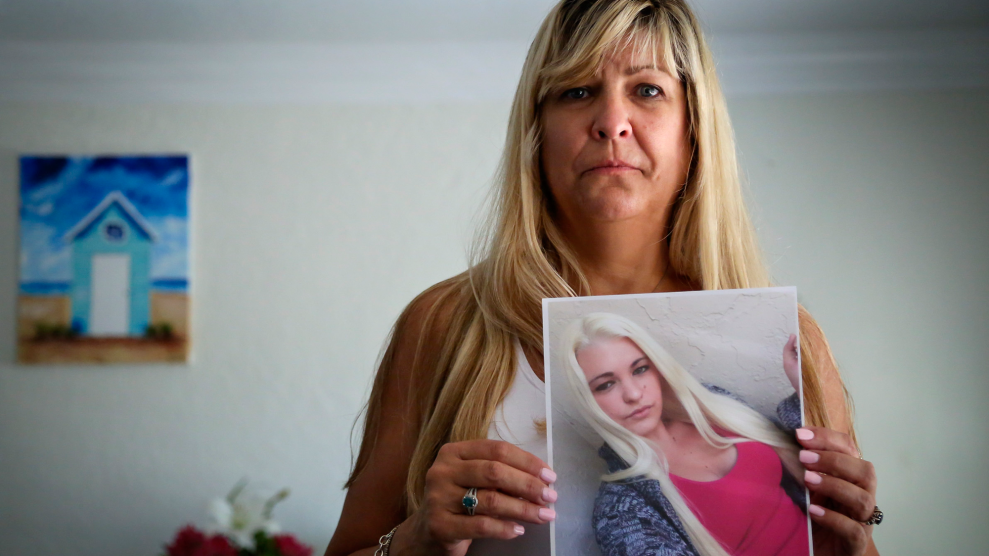
Residents of northeast Ohio's Trumbull County gather for a town hall on the growing opioid epidemic.Julia Lurie
This week I’m spending time in two counties in Northeast Ohio. Like so many places in the Rust Belt, Ashtabula and Trumbull counties have been ravaged by the opioid epidemic. I’m talking to people here about what the drugs have done to their communities. I’ll be tweeting about what I’m seeing.
Two weeks ago, Brian Reed read on Facebook that there had been another overdose in his hometown of Warren, Ohio—this one in a supermarket parking lot. Police warned residents of the Rust Belt town to avoid the area. “Prayers to the family,” Reed wrote in the comments section of the article.
Later that afternoon, two detectives knocked on the door to tell him that the victim was his son, David. The 29 year old had been the father of two, with another on the way.
https://twitter.com/julia_lurie/status/844035252729380864
David’s death was one of 16 fatal overdoses so far this March in Trumbull County, a monthly record in a northeast Ohio region that has been devastated by the spread of fentanyl, a synthetic opioid far more potent than morphine or heroin. The county is decidedly rural—farmland studded with small towns of chain stores and vacant mom-and-pop shops, country music and sermons on the radio. On Monday night, 275 residents made the drive to a town hall about the epidemic. When asked who had lost a loved one to overdose, many people raised their hands.
The exact cocktail of drugs that killed David won’t be known for several more weeks; with so many deaths, there’s a backlog in toxicology testing. But all signs point to fentanyl: Increasingly, drug users checking into treatment are testing negative for heroin but positive for the synthetic opioid, said Dr. Daniel Brown, the chief medical officer of local drug treatment center Meridian Healthcare. “There’s no naturally occurring opiate in their system—it’s all fentanyl,” he said. “I don’t foresee us going back to having naturally occurring opiates such as heroin. It’s probably here to stay.”
After each overdose death in Trumbull County, Humphrey Garmaniuk, the county coroner, receives a phone call and his team examines the scene. “I did one this morning, he was found by his son,” he said. “I have a 31-year-old lady waiting for me tomorrow.”
https://twitter.com/julia_lurie/status/843974864985886721
Despite the barrage of bad news, there were some reasons to be hopeful. Due to an aggressive county-wide effort to distribute the overdose reversal drug naloxone to drug users and their families, 132 overdose victims were successfully revived by community members last year. Medication addiction treatments are increasingly available, said county mental health board executive director April Caraway. Brian Reed encouraged attendants to spread the word about Ohio’s Good Samaritan law, which protects those who call 911 in overdose cases from being arrested.
Participants asked questions on note cards: What kind of addiction treatment is best to start with? Are there support services for the children of users? Does using naloxone over and over just enable drug users? And, finally: “Story of hope: Beauty and beast. Daddy was the beast when he was doing drugs. Now he’s my prince. My father’s been clean for three years.”















